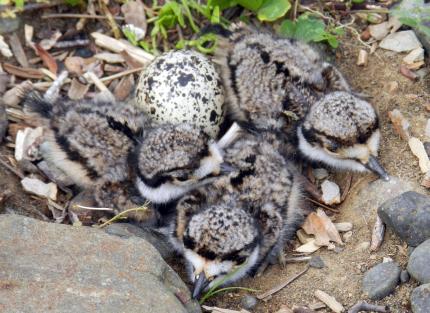
Sooner or later, no matter where you live, you’ll come across a baby bird on the ground. You’ll have to decide whether you should rescue it or leave it to fend for itself. In most cases, it is best not to interfere. The natural parents do a much better job at raising their young than we could ever do. A featherless baby bird must be fed every 15 to 20 minutes from sunrise to 10 p.m. – a significant time commitment for any foster parent.
Feathered fledglings
If the bird is fully or partially feathered, chances are it doesn't need your help. Fledglings, also known as “branchers,” typically leave the nest and move about on the ground and on low branches for a few days before they can fly. Their parents are nearby and continue to care for the birds, answering their demanding calls with regular deliveries of food.
Unless injured, a fledgling bird should be left where it is. You can help by keeping cats, dogs, and curious children away from the bird so the mother can continue to feed it. However, removing a native bird from its environment is illegal, and deprives it of the essential care it needs from its parents.
Naked nestlings
If you find a baby bird with sparse feathers or none at all, it is a nestling that has likely fallen or been pushed from a nearby nest. If you can find it, you can give the bird a helping hand by returning to the nest. It’s best to wear gloves, but mostly for your own protection. Birds have a poor sense of smell, and it’s not true that they will abandon their chicks if a person touches them.
If you can’t find the nest or accessing it is too dangerous, put the baby bird where its parents can find it and where it will be safe from cats. Use a small plastic berry basket, margarine tub, or similar container lined with shredded paper towels (cotton products tend to tangle up in birds’ feet). With a nail or wire, fasten the makeshift nest to a shady spot in a tree or tall shrub near where the bird was found. Next, place the nestling inside, tucking the feet underneath the body.
The parents will usually come back in a short time and will feed the babies in the container just as if it were the original nest. Often, you will see the mother going back and forth between each “nest,” feeding both sets of babies.
Ducklings and goslings
If a baby duck or gosling is separated from the mother and siblings and you know where they are, place the baby close to its siblings and where the parent can hear it. Then watch from a distance to see if it rejoins its brood and is accepted by the parent. You can also try introducing the baby duck to another brood of approximately the same age.
If the baby bird is rejected, retrieve it and place in a ventilated container with soft lining. Put in a quiet place and contact a wildlife rehabilitator
When to take a baby bird to a wildlife rehabilitator
Call a permitted wildlife rehabilitator right away if:
- You are certain the parents are dead or not caring for the nestling.
- The bird is sick or injured, exhibiting drooping wings, shivering, lethargy,or an attack by a cat, dog, or other predator.
While waiting for or transporting to a wildlife rehabilitator:
- Find a suitable and well-ventilated container and line with a clean soft cloth (not terry cloth) or paper towels.
- Gently pick the bird up with gloved hands and place it in the container.
- Keep the baby bird in a warm, quiet, and dark place. You can put one end of the container on a heating pad set on lowest setting. If a heating pad is unavailable, use a warm, not hot, rice heat pack placed inside the container next to the bird.
- Do not give the baby bird any food or water.
Wash your hands and anything that contacts the bird to prevent the spread of disease and/or parasites to you or your pets.